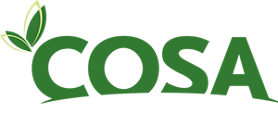Purpose
With consistent indicators we have a shared understanding and a foundation for better management of sustainability.
- Easily interpret impact and performance
- Capture observed facts and reported perceptions
- Better insights from a rich multi-dimensional understanding
- Field-tested globally to permit confident observations and interpretation
Definition: COSA indicators are designed to quantify and clarify information in a manner that promotes the understanding of key environmental, social, and economic issues.
Distinction
What an indicator captures is important but even more valuable is the combined COSA experience to gather, analyze, and communicate results in a balanced and effective manner. COSA indicators are designed to be similar across all countries to allow for comparison but are also adapted to allow for local contexts.
See more indicators for specific sectors such as Tea, etc.A Sample Of Global themes
- Trading Relationships
- Community
- Living and Working Conditions
- Basic Human Rights and Equity
- Water
- Soil
- Resource Management
- Biodiversity
- Climate Change
- Producer Livelihood
- Risk (Economic Resilience)
- Producer Organization
- Competitiveness




